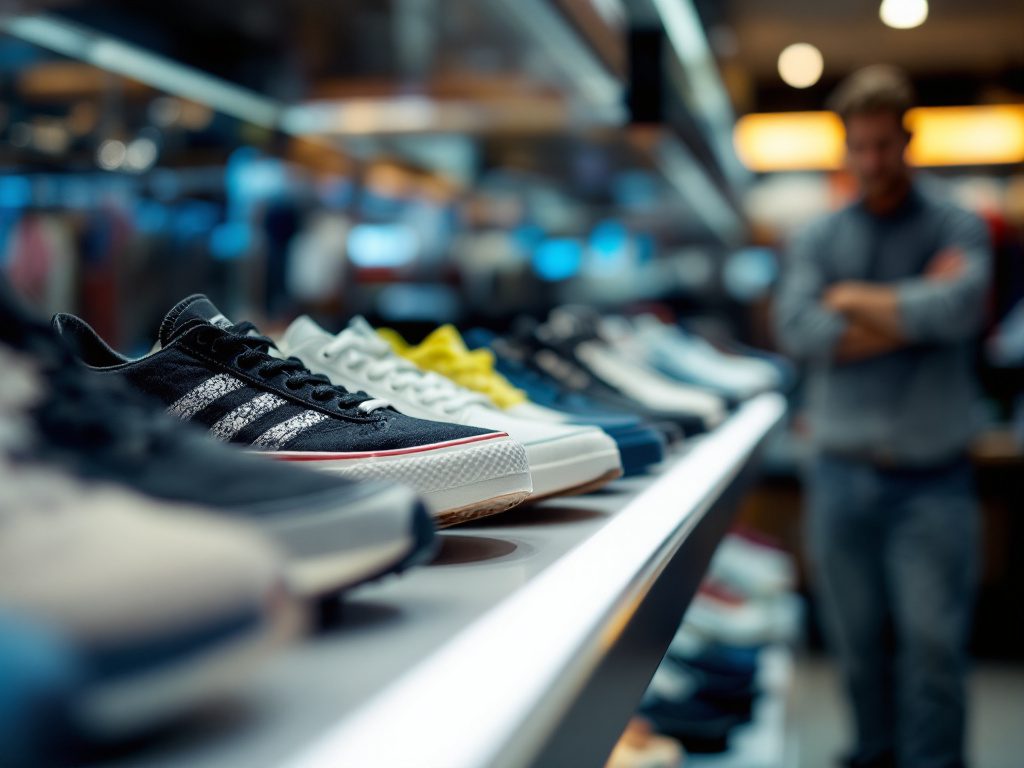Warning Lights Flash for Retail Giants
Stock downgrades in the apparel sector rarely grab mainstream headlines, but Wells Fargo’s blunt demotion of Nike from “Overweight” to “Equal Weight” signals something deeper than just a missed sales quarter. Picture it: a global athletic-wear giant whose iconic swoosh is synonymous with resilience and reinvention, now thrown into Wall Street’s penalty box amid anxieties that should worry every American consumer—especially those watching their 401(k)s or worrying about job security in a retail landscape that feels perpetually shaky.
The timing of Wells Fargo’s move is arresting. Released the same day as the latest U.S. GDP numbers, the downgrade coincided with revelation that the economy contracted 0.3% in March 2025—the first such dip since the pandemic’s shadowed opening salvo in early 2022. Benchmark indices reeled: the Dow slipped by 700 points and the S&P 500 ETF dipped 2%; Nike’s own shares shed more than 3% in a single day. Here’s the crux: Nike shares are now down 24% year-to-date, with analysts warning the ride isn’t over. Wells Fargo slashed the stock’s target price from $75 to a limp $55, hinting at another 4% decline and casting serious doubt on a comeback anytime soon.
This is about more than just one company’s fortunes. According to Wells Fargo’s lead retail analyst Ike Boruchow, the “turnaround” so often pitched by Nike’s leadership is running into more than supply chain kinks or changing fashion trends. Broader macroeconomic forces—from new tariffs on Chinese imports to the specter of a so-called “mild recession” in the second half of 2025—are squeezing not just Nike but the entire apparel and footwear sector.
Tariffs, Recession, and the Domino Effect
A closer look reveals how even multinational behemoths like Nike are now vulnerable to forces beyond their control. The current round of elevated tariffs on goods from China—echoes of Trump-era trade brinkmanship extended and, in some cases, escalated by the current administration—has erased any illusion of retail immunity. As U.S. consumers grow more cautious, companies importing apparel and footwear face higher costs, thinner margins, and a tougher sell at the register.
It’s not just Nike that’s under the microscope: Victoria’s Secret, Carter’s Inc., and others saw their ratings cut, while estimates for 2026 earnings per share across the sector have been slashed by 20-25% versus Wall Street consensus, reflecting a rare consensus among analysts about the storm clouds on retail’s horizon. Elizabeth Wellington, a retail historian at the University of Pennsylvania, points out, “The post-pandemic consumer is still wary—rising interest rates, sticky inflation, and policy uncertainty make splurging on new sneakers feel almost reckless for many households.”
Beyond that, not every brand is doomed. Levi Strauss, bolstered by low exposure to the precarious China trade, actually earned a Wells Fargo upgrade, joining the likes of Canada Goose and VF Corp, whose own bear cases have, as the bank’s analysts put it, ‘largely played out.’ Perhaps most telling, it’s the digitally native resale giants—The RealReal and ThredUp—which avoided downgrades altogether, thanks to zero tariff exposure and what Boruchow calls “counter-cyclical positioning.”
“For the first time in years we’re seeing tariffs and recession jitters combine to knock down even the most globally recognized brands. The old logic—that iconic logos guarantee resilience—is being rewritten right before our eyes.”
The pattern is impossible to ignore. At a moment when American workers, especially those in retail and supply chain jobs, are still clawing back from pandemic-era dislocation, conservative policy tools—tariffs and deregulation—show their limits. The collateral damage is real: worker hours get cut, smaller suppliers feel the squeeze, and shareholders see portfolios wobble.
Who Pays the Price—and Who Rewrites the Rules?
It’s tempting, listening to market analysts, to treat downturns as impersonal blips, but the stakes are deeply human. When Nike or Victoria’s Secret lose market confidence, that risk is transmitted to workers—sales staff, warehouse pickers, truck drivers—whose livelihoods ride the highs and lows of Wall Street’s mood swings. And for millions of Americans, “non-essential” retail isn’t abstract; it’s their job.
Progressives have long warned that right-wing economic strategies can, in times like these, leave ordinary Americans dangerously exposed. Cheap sloganeering about “America First” tariffs glosses over the domino effect that higher import costs have on retail jobs and family budgets. Harvard labor economist Jane Kim explains, “Tariffs aren’t free. They show up on price tags, whittle away at paychecks, and ultimately heighten recession risks when companies slash costs to compensate.”
Is there a better way forward? Some evidence says yes. Even as brick-and-mortar retail stumbles, platforms like The RealReal prove that nimble adaptation matters. Their counter-cyclical growth is powered by consumer thriftiness, environmental responsibility, and a business model built for sustainability. As younger Americans flock to “pre-loved” alternatives, the future tilts, however subtly, toward economic models aligned with progressive values: circularity, inclusivity, and resilience against boom-bust cycles.
Still, turning the tide on retail vulnerability requires more than optimism and clever branding. What’s demanded now is smart industrial policy, investment in green supply chains, and a level playing field where workers aren’t always the first casualties of policy gambles they didn’t vote for. Economic pain shouldn’t be the price we pay for ideological point-scoring on trade or taxes. If recent downgrades in once-bulletproof stocks like Nike teach us anything, it’s that collective well-being, not short-term market gains, must be the North Star.

